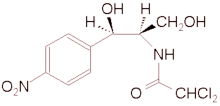An editorial in the BMJ recommended discontinuation of the routine use of chloramphenicol eye drops largely on the basis of case reports suggesting an association between their use and serious haematological toxicity, particularly aplastic anaemia.[1] Although this recommendation has been challenged, the debate has not been informed by reliable estimates of the size of any risk.[2]
Around 400 general practices in the United Kingdom contribute anonymised data to the general practice research database. They record prescriptions and diagnoses from consultations and hospital letters. Use of the data for drug safety studies is well validated.[3] In particular, previous studies have shown that it can be used reliably to detect associations between drug exposure and haematological toxicity.[4] We used the database to describe prescribing patterns of chloramphenicol eye drops and to estimate the risk of aplastic anaemia after their use.
Subjects, methods, and results
We identified all patients who received at least one prescription for chloramphenicol eye drops between January 1988 and April 1995. We reviewed the computer records of patients with a new diagnosis of any of the following conditions occurring up to 90 days after such a prescription: aplastic anaemia, thrombocytopenia, agranulocytosis, leucopenia or neutropenia, unspecified white blood cell disorders, blood dyscrasia (International Classification of Diseases, eighth revision, codes 284.9, 287.1, 288.0, 288.1, 288.9, 289.9).
A total of 442 543 patients received 674 148 prescriptions for chloramphenicol eye drops. 314 205 patients (71%) received one prescription; 115 061 (26%) had between two and four prescriptions, and 13 276 (3%) had five or more. Use was higher in the younger age groups. Around 30% of children aged 0-9 years received one or more prescriptions compared with 8% of those aged 10-44 years and 5% of those aged 45 or more.
We identified three patients with serious haematological toxicity and one who developed mild, transient leucopenia that was not considered serious. One of the serious cases, a boy with epilepsy, was admitted to hospital with red cell aplasia 72 days after a prescription for chloramphenicol eye drops. He had received four prescriptions over a five year period, two of them in the three months preceding admission. He had stopped taking lamotrigine six weeks before because he had developed Stevens-Johnson syndrome and had started treatment with phenytoin three weeks before developing red cell aplasia. The patient presented with severe anaemia and bone marrow biopsy confirmed red cell aplasia. Phenytoin was discontinued and he was given a blood transfusion and treated with folic acid. He recovered fully. Clinical opinion was that the lamotrigine or phenytoin treatment was probably the cause of the aplasia. Thus, a causal association with chloramphenicol seems unlikely. The second serious case was a woman in her 60s with cirrhosis of the liver; she developed pancytopenia 71 days after a single course of chloramphenicol eye drops. She was not admitted to hospital and reported no symptoms. The last serious case was a woman in her 80s who had melaena seven days after a prescription for chloramphenicol eye drops. She was found to have pancytopenia and died from gastrointestinal bleeding 12 weeks later.
Comment
Even in the unlikely event that all three cases were caused by chloramphenicol eye drops, these data indicate that the risk of serious haematological toxicity after treatment with ocular chloramphenicol is in the order of 3 per 442 543 patients or 3 per 674 148 prescriptions.
The risk of serious haematological toxicity attributable to chloramphenicol eye drops is small. Chloramphenicol eye drops are cheap and effective. Their continued use for eye infections seems to be a sate clinical strategy.
Contributors: TL initiated the study hypothesis. TL, AMS, and HJ participated equally in the design, analysis, and writing of this report.
Funding: The Boston Collaborative Drug Surveillance Program is supported in part by grants from Astra Hassle, Bayer, Berlex Laboratories, Boots Healthcare International, Ciba-Geigy, Glaxo Wellcome, Hoechst, RW Johnson Pharmaceutical Research Institute, Merck Research Laboratories, Organon, and Pfizer.
Conflict of interest: None.
[1] Doona M, Walsh JB. Use of chloramphenicol as topical eye medication: time to cry halt? BMJ 1995;310:1217-1218.
[2] Rayner SA, Buckley RJ. Ocular chloramphenicol and aplastic anaemia. Is there a link? Drug Safety 1996;14:273-276
[3] Jick HH, Jick SS, Derby LE. Validation of information recorded on general practitioner based computerised data resource in the United Kingdom. BMJ 1991;302:766-768.
[4] Jick H, Myers MW, Dean AD. Sulfasalazine and mesalazine associated blood disorders. Pharmacotheraphy 1995;15:176-181.
(Accepted 20 May 1997)
Imperial Cancer Research Fund General Practice Research Group, University of Oxford, Division of Public Health and Primary Care, Institute of Health Sciences, Oxford, OX3 7LF
Tim Lancaster, general practitioner
The Boston Collaborative Drug Surveillance Program, Boston University Medical Center, Lexington, MA 02173, USA Hershel Jick, associate professor of medicine
Ann-Marie Swart, epidemiotogist
Correspondence to: Dr Lancaster Tim.Lancaster@dphpc.ox.ac.uk
BMJ 1998;316:667
COPYRIGHT 1998 British Medical Association
COPYRIGHT 2000 Gale Group



